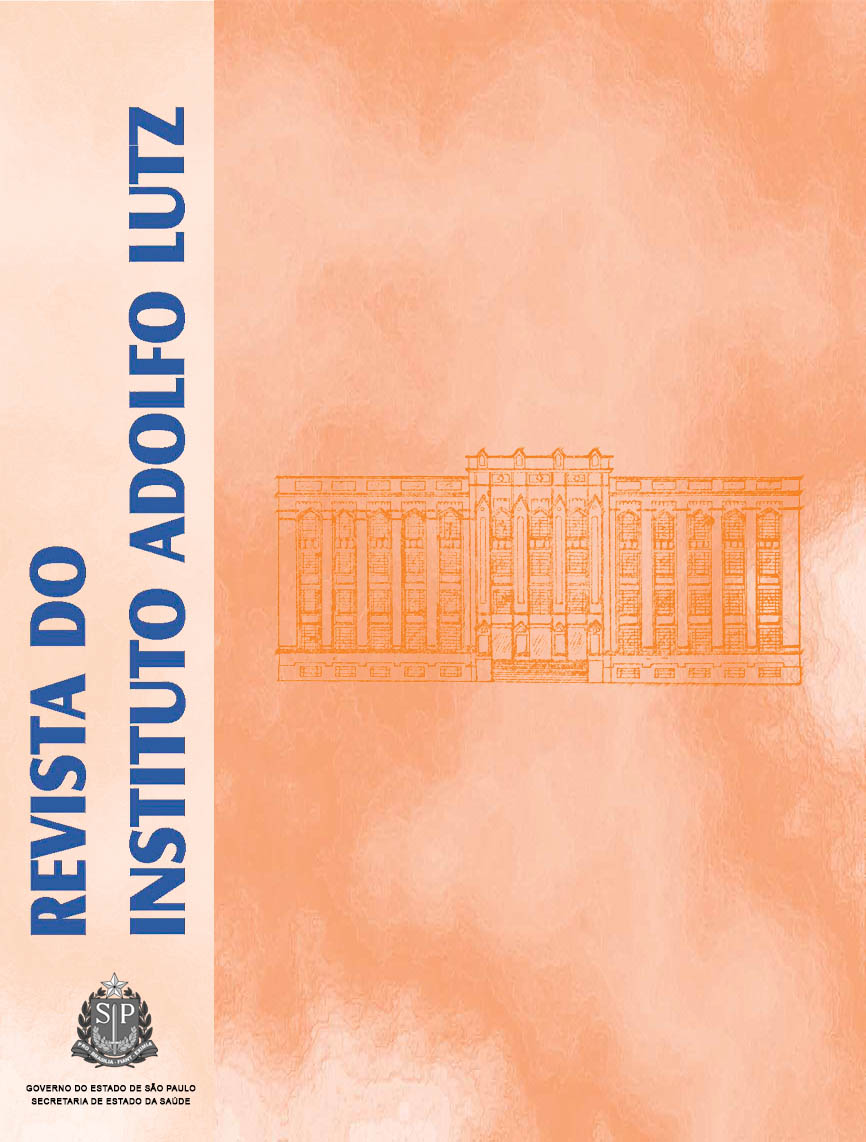Abstract
The effect of ionizing radiation in raw, vacuum and modified atmosphere packed chicken legs and storage at 4±1oC was evaluated on the basis of thiobarbituric acid reactive substances (TBARS) The vacuum-packed samples exhibited a gradual increase in TBARS values proportional to the radiation dose in the course of the storage period, but the differences were not statistically significant (p>0.05) up to the fourteenth day when the samples exposed to the different radiation doses applied were compared. Samples irradiated with 1.5 kGy and 3.0 kGy and packaged under modified atmosphere showed significantly lower TBARS values as compared to the vacuum-packaged samples, except after 20 and 26 days storage. The maximum TBARS values were obtained from samples irradiated with 7.0 kGy, with mean values of 2.13 and 1.52 mg.kg-1 of malonaldehyde, for the vacuum and modified atmosphere packages respectively.References
1. Kosugi H, Kato T, Kikugawa K. Formation of red pigmentby a two-step 2-thiobarbituric acid reaction of alka-2,4-dienals. Potential products of lipid oxidation. Lipids 1998;23: 1024-31.
2. Marcuse R, Johansson L. Studies on the TBARS test forrancidity grading: II TBARS reactivity of different aldehyde classes. J Am Oil Chem Soc 1973; 50: 387-91.
3. Tarladgis BG, Watts BM, Younathan MT. A distillation method for the quantitative determination of malonalde hyde in rancid foods. J Am Oil Chem Soc 1960;37: 44-8.
4. Hoyland DV, Taylor AJ. A review of the methodologyof the 2-thiobarbituric acid test. Food Chem 1991; 40:271-91.
5. Patton S, Kurtz GW. 2-Thiobarbituric acid as areagent for detecting milk fat oxidation. J Dairy Sci.1951; 34: 669.
6. Turner EW et al. Use of the 2-thiobarbituric acid reagent to measure rancidity in frozen pork. Food Technol 1954;8: 326-30.
7. Sidwell CG, Salwin H, Benca M, Mitchell JHJ. The use of the thiobarbituric acid as a measure of fat oxidation. J Am Oil Chem Soc 1954; 31: 603.
8. Sinnhuber RO, Yu TC. 2-Thiobarbituric acid method for the measurement of rancidity in fishery products. II The quantitative determination of malonaldehyde. Food Technol. 1958; 12: 9-12.
9. Vyncke W. Evaluation of the direct thiobarbituric acidextraction method for determining oxidative rancidity inmackerel (Scomber scombrus L.) Fette Seifen Anstrich1975; 77: 239-240.
10. Yu LW et al. High performance liquid chromatography analysis of the thiobarbituric acid adducts of malonaldehyde and trans, trans-muconaldehyde. AnalBiochem 1986; 156: 326-33.
11. Robles-Martinez C, Cervantes E, Ke PJ. Recommended method for testing the objective rancidity development in fish based on TBARS formation. Canadian Technical Report of Fisheries andAquatic Sci. n° 1089, 1982, 28 p.
12. Lyon BG, Lyon CE, Ang CYW, Young LL. Sensory analysisand thiobarbituric acid values of precooked chicken pattiesstored up to three days and reheated by two methods.Poultry Sci. 1988; 67: 736-742.
13. Pikul J, Leszcynski DE, Kummerow FA. Evaluation ofthree modified TBARS methods for measuring lipidoxidation in chicken meat. J Agric Food Chem 1989; 37:1309-13.
14. Pikul J, Leszcynski DE, Kummerow FA. Elimination of sample autoxidation by butylated hydroxytoluene additions before thiobarbituric acid assay for malonaldehyde in fatfrom chicken meat. J Agric Food Chem. 1983; 31:1338-1342.
15. Ahn DU et al. Effects of dietary vitamin E supplementation on lipid oxidation and volatiles content f irradiated cookedturkey meat patties with different packaging. Poultry Sci.1998; 77: 912-20.
16. Horax R. et al. Effect of gamma irradiation and storage time on thiobarbituric acid reactive substances (TBARS) in chicken breast meat infused with antioxidants and selectplant extracts. The Food Safety Consortium Annual Meeting, October 13-15, Manhattan.
17. Jo C, Lee JI., Ahn DU. Lipid oxidation, color and volatiles changes in irradiated pork sausages with different fat contentand packaging during storages. Meat Sci 1999; 51: 355-361.
18. Guillén-Sans R, Guzmán-Chozas M. The thiobarbituric acid (TBARS) reaction in foods: a review. Crit Rev FoodSci Nutr 1998; 38: 315-330.
19. Osawa CC, De Felício PE, Gonçalves LAG. Teste de TBARS aplicado a carnes e derivados: métodos tradicionais, modificados e alternativos. Quim Nova. 2005;28: 655-663.
20. Pauli GH, Tarantino LM. FDA regulatory aspects of food irradiation. J Food Prot 1995; 58: 209-12.
21. Resolução RDC nº. 21, de 26 de janeiro de 2001, Brasil. Agência Nacional de Vigilância Sanitária. Aprova o Regulamento Técnico para Irradiação de Alimentos. Diário Oficial da União, Brasília, nº. 20-E, de 29 de janeiro de2001. Seção 1, p.35.
22. Statsoft, Inc., Tulsa, OK, USA. STATISTICA for Windows. 1995.
23. Greene BE, Cumuze TH Relationship between TBARS numbers and inexperienced panelists’ assessments ofoxidized flavour in cooked beef. J Food Sci 1981; 47: 52-8.
24. Miyagusku L, Chen F, Leitão MF, Baffa O. Avaliação microbiológica e sensorial da vida útil de cortes de peito de frango irradiados. Cienc Tecnol Aliment 2003; 23 (Suppl.1): 7-16.

This work is licensed under a Creative Commons Attribution 4.0 International License.
Copyright (c) 2007 Instituto Adolfo Lutz Journal
